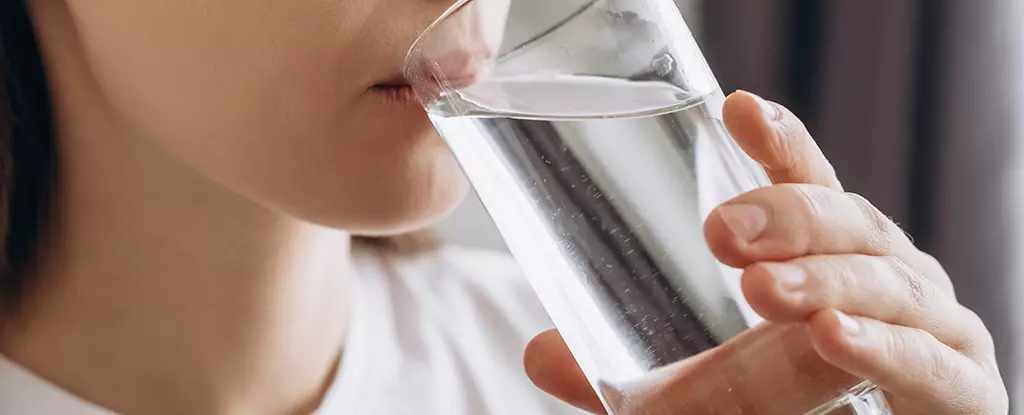In recent years, the presence of microplastics in our environment has emerged as a significant point of concern for both health researchers and the general public. Microplastics, tiny plastic fragments measuring less than five millimeters, have infiltrated various ecosystems, including our water supply, food chain, and even the air we breathe. A particularly alarming source of exposure is drinking water, where microplastics can come from numerous pathways, particularly through water treatment facilities that struggle to remove these contaminants effectively. As scientists strive to understand the implications of microplastics on human health, new research offers hopeful strategies to mitigate the dangers associated with this ubiquitous pollution.
A recent study conducted by a team from Guangzhou Medical University and Jinan University in China presents a straightforward yet effective method to eliminate nanoplastics and microplastics (NMPs) from drinking water. The research, published in February, highlights how traditional boiling can serve as a viable approach to reduce the concentration of these plastic particles in both soft and hard tap water. Such findings are particularly relevant given the growing body of evidence linking NMPs to potential health risks, underlining the urgent need for effective protective measures that can be employed in everyday life.
In their experimental setup, researchers added specified amounts of microplastics to water samples before subjecting them to boiling and subsequent filtering stages. The results showed that boiling the water, particularly in hard water conditions rich in minerals like calcium carbonate, could effectively remove up to 90 percent of the NMPs present. This result is encouraging, especially since such processes can easily be replicated in households with common kitchen equipment, thereby empowering individuals to take action against microplastic consumption.
The mechanics behind how boiling can effectively reduce microplastics in water primarily involve the interaction of heat with mineral content. When hard tap water is heated, it naturally facilitates the precipitation of calcium carbonate, forming limescale deposits. These deposits effectively trap microplastic particles, allowing them to be filtered out when the water is strained, such as with a simple stainless-steel tea strainer. Even with soft water, where limescale formation is less pronounced, boiling still managed to capture a notable portion of microplastics, demonstrating the method’s versatility.
This revelation could have significant implications for public health, suggesting that a straightforward habit of boiling drinking water could serve as an essential practice for lessening microplastic exposure. The researchers advocate for this strategy, hoping it becomes more widely recognized and adopted in communities plagued by plastic pollution.
Health Implications of Microplastic Ingestion
Despite the promising solution presented by boiling water, concerns about the health risks associated with ingesting microplastics remain. Past research has indicated potential links between plastic consumption and adverse effects on essential bodily functions, including disturbances in the gut microbiome and increased antibiotic resistance. While the full extent of the health risks posed by microplastic ingestion is not entirely measurable at this stage, the correlation between plastics and bodily harm cannot be overlooked. This revelation necessitates the continued prioritization of research aimed at understanding how microplastics affect human health and validating proven methods for reducing exposure.
The Future of Drinking Water Safety
As environmental issues mount, the urgency for innovative responses to microplastic contamination grows. The study led by the Chinese research team provides essential groundwork for further exploration into methods that could mitigate NMP exposure. The hope is that boiling water becomes more recognized, especially in areas where it is not yet common practice. While boiling may seem like an innate response in some cultures, fostering acceptance and implementation of this practice globally could help curb the influences of plastic pollution in our diet.
Ultimately, it will take a combination of individual action and larger systemic initiatives to combat the challenges posed by microplastics. As studies like this one advance our understanding of the issue, they equip us with the knowledge necessary to protect ourselves and future generations from the lingering impacts of plastic pollution. With further research and awareness, we can unravel the complexities surrounding microplastics and potentially forge a safer path toward clean drinking water for all.


Leave a Reply